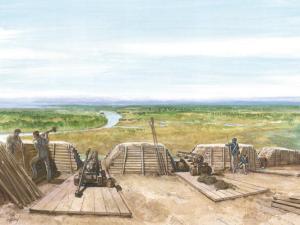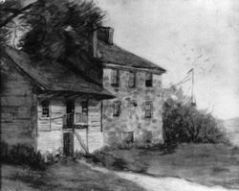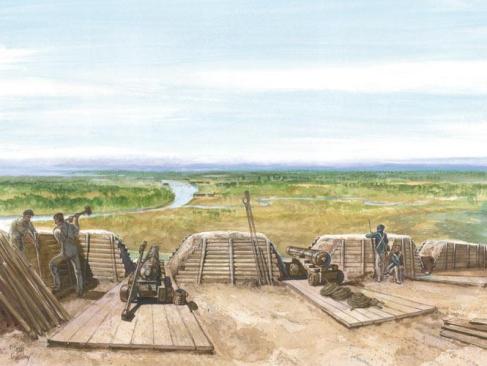It was a warm summer evening along Little Elk Creek when the silence of that evening was broken: first by the sound of paddles, slapping the water, followed by the shouts of “fire” and the crack of muskets and rifles. Then more paddle splashes, cries of “huzzah” and then the quite returned. “Four of the enemy’s barges had been repulsed by a party of militia at Elkton, but that they were expected to return the seceding night in greater force.”
Thus began a memo from the Secretary of the United States Navy following an attack by British Marines against the forts at and near what is now Historic Elk Landing. The date was July 11th, 1814, over a year since the initial attack on the Head of Elk in April of 1813, an event which was observed and celebrated in historic reenactment and character interpretation last year. But this second attack came just one month before the British advanced on and burned Washington, D.C. and two months prior to the less successful bombardment of Fort McHenry, which resulted in the writing of “The Star Spangled Banner.”
Secretary John Rodgers acted on his fears of another British attack on Elkton as he ordered re-enforcements of men and materials.
“I was induced to order Lieutenant Morgan of the Navy, to march 250 of the officers and seamen attached to the flotilla, to his assistance, for the defense of that place and the surrounding country.” According to Secretary Rodgers, Lt. Morgan and his troops made it to Elkton in record time.
“In three hours and 47 minutes, the whole detachment, completely armed, reached the courthouse at Elkton, with two heavy pieces of traveling artillery, notwithstanding the roads were excessively bad, and the night very dark and rainy.”
According to a report posted on the Historic Elk Landing web site titled “The War of 1812 and How it Relates to Elk Landing,” the attack came the next day.
“The British attacked with 3 barges, but again were repulsed by the Elkton militia. Due to the difficulty of navigating to Elkton and the positioning of the forts as well as the militia itself, the British were never able to successfully attack Elkton nor burn it.”
This second and third attack on Elkton by the British during the War of 1812, takes a back seat to the events occurring in Washington D.C. and later Baltimore as well as at Elk Landing itself the previous year. It was during that first attack that Frenchtown, its wharfs, two packet boats, and some store houses were burned. But it was the bravery of a 19 year old slave woman named Hettie Boulden who saved Elkton from the British torch by directing a squad of British Marines right into the cross hairs of the muskets, rifles, and cannons posted at Forts Hollingsworth and Defiance. The underground remains of Fort Hollingsworth were located in the spring of 2012 and were outlined for the 2013 re-enactment. Both that 1813 and the July 1814 attacks were some of the very few failures encountered by the British in their efforts to subdue their former colonies during this “Second War of Independence,” as it is sometimes called. The President and Dolley Madison barely escaped Washington before the British arrived, sacking and burning the city. The British were not stopped again until they were repulsed at Fort McHenry a month later. The war would continue for another three months, ending with the Battle of New Orleans, which was actually fought AFTER the peace treating ending hostilities was signed. But now we remember and celebrate the brave men of the Cecil Militia who successfully defended their families, farms, and country from foreign invasion… 200 years ago today!
More information about Historic Elk Landing, the foundation, the War of 1812, and Fort Hollingsworth is located on the foundation web site at http://www.elklanding.org
For more information about the War of 1812 in Cecil County, contact the Historical Society of Cecil County at http://www.cecilhistory.org




